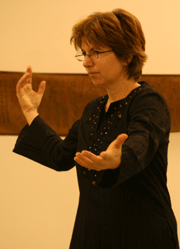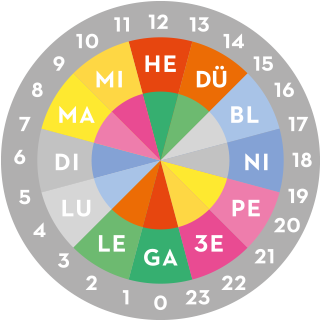QIGONG 乞功

Qigong is a form of therapy within traditional Chinese medicine (TCM) that dates back to the 6th century BC. Its roots lie in the conceptual worlds of Taoism and Buddhism. For many centuries special exercises, that have collectively come to be called “Qigong”, were practiced by Monks who lived secludedly in Chinese mountain regions and searched for methods to prolong life. Many of these exercises were previously “secret knowledge” that was passed on strictly within families. It was not until the 20th century that this form of constitutional exercise spread into the public domain.
Qigong is a composite of the syllables Qi – “vital energy” and Gong – “work, effort”. However, the direct translation of the word Qi is insufficient to convey the full native meaning of this Chinese word. Qi stands for an extremely important aspect of TCM that transcends our (Western) understanding of energy. It refers to a universal power without which life would not be possible. In Chinese culture the existence of the world, nature and consequently man is dependent on this “vital energy” and its sufficient availability and unrestricted flow. Thus, good health critically depends on a sufficient amount of Qi being available in the body, all organs, muscles, joints and the body’s surface and on the Qi being able to circulate naturally without constraint.
Illnesses are often caused by disturbances in the free flow of Qi. These disturbances usually occur as a result of muscle hardening/tension, malposition, improper work-load/stress on muscles. The hectic nature of contemporary life is especially conducive to the emergence of Qi blockades. This form of “working with Qi” is thus a great way to counterbalance the stress burden and to treat pains within the locomotor system. Chinese hospitals often use certain types of Qigong as a complementary therapy to treat serious chronic illnesses.
Qigong encompasses physical exercises (movement) as well as resting exercises. The latter (Jinggong) are forms of meditation – primarily focusing on mind and soul. These exercises can be done sitting or lying down and are thus suitable for physically debilitated people. Ostensibly, the exercises exude calmness, but on the inside, the exercising person is fully devoted to the movement and flow of Qi. The physical exercises (Donggong) comprise gentle and soft motion sequences that are completed in a state of harmony of the soul, mind and breathing.
There is one overarching prerequisite that needs to be fulfilled, whichever form of “working with Qi” one decides to pursue. Practitioners of Qigong must relinquish the acquired thought patterns related to “striving for perfection”. The aim is neither to learn a movement pattern as quickly as possible in order to move on to the next one immediately, nor to consume as many types of Qigong as possible. The real aim is to recognise and perceive oneself, keeping in mind the old and very valid Chinese proverb: the journey is its own reward. Those that have put themselves on the journey of training patiently with enthusiasm and curiosity have, with the help of regular practice, started to perceive their undivided self again have already reached their goal.



